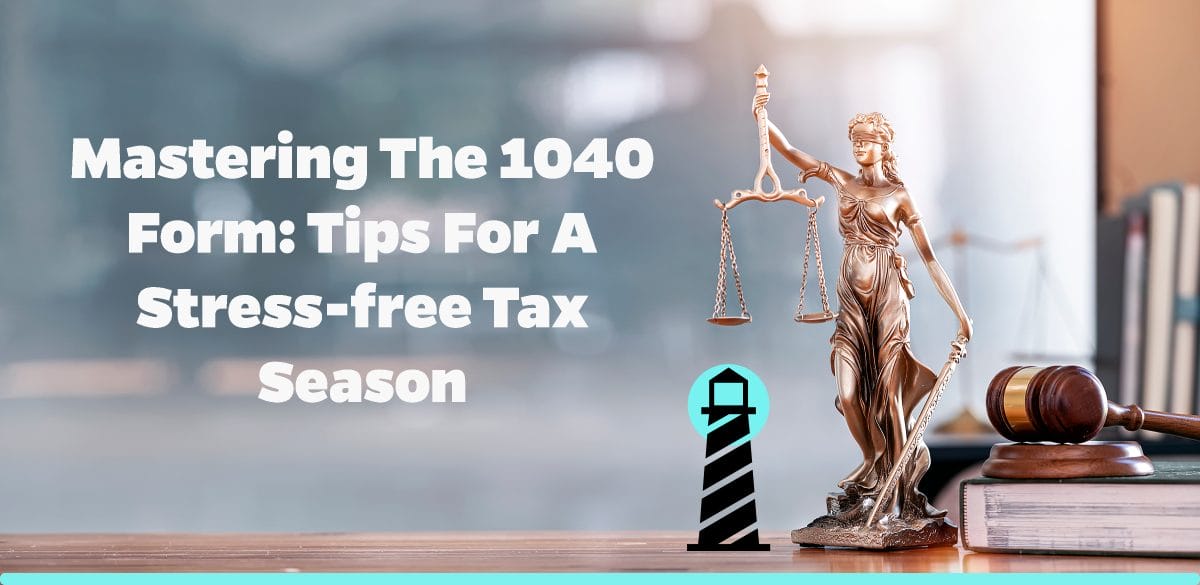Unpack the Mysteries of the 1040 Form
Every year, taxpayers face the challenging task of filling out the 1040 Form. This important piece of paperwork is required by the Internal Revenue Service (IRS) and yet, understanding it can be daunting. You don’t have to be a tax expert to navigate the 1040, but having some basic knowledge about it can certainly make tax season less stressful. At Brightside Tax Relief, we’re here to help you grasp what a 1040 is, when you should use it, and how to accurately complete it.
What is a 1040 Form?
The 1040 Form, according to the IRS, is the standard Federal income tax form used to report an individual’s gross income. This form incorporates numerous types of income, deductions, and credits to figure out the final amount of taxes you owe or the tax refund you can expect. It’s a fundamental part of filing your income tax return.
Who Should File a 1040 Form?
Every American taxpayer is required to file a 1040 form. Whether you are employed, self-employed, unemployed, or retired, you must file this form if you meet the IRS income minimum. Factors such as your filing status, age, and the type of income you have received all determine if you are required to fill out a 1040.
How to Prepare Your 1040 Form for Filing
Preparing to file your 1040 involves gathering all necessary information and documents. It doesn’t have to be a daunting task if you plan ahead and stay organized. Here are some key steps:
- Gather your information. Collect your tax documents, including W-2s, 1099s, receipts for deductions or credits, and a copy of last year’s tax return.
- Understand your filing status. Are you single, married filing jointly, married filing separately, head of household, or qualifying widower with dependent child? Your status affects your tax deductions and credits.
- Income. The 1040 form requires you to report all types of income, such as wages, salaries, tips, dividends, and more.
- Calculate deductions and credits. Deductions reduce your taxable income, while credits subtract from the amount of tax you owe.
- Pay or get a refund. After all calculations, you may either owe the IRS money or be due a refund.
Surefire Tips to Tackle your 1040 Form
Mastering the 1040 can be intimidating, but by following these tips from Brightside Tax Relief, you can make the process smoother:
- Stay organized by keeping all required documents in a safe place throughout the year. This will make tax time much less stressful.
- Thoroughly check your form for errors before sending it to the IRS. This includes double-checking your Social Security number, income calculations, and tax payments.
- Take advantage of online tax software. These resources guide you through the process and ensure you’re not missing any crucial tax breaks.
- Don’t hesitate to seek professional tax advice if you’re unsure about something. This can prevent potential errors and can also give you peace of mind during tax season.
Getting a Tax Break with Brightside Tax Relief
Nothing should deter you from maximizing your tax breaks. Brightside Tax Relief helps by providing expert tax services nationwide, making tax filing easier for everyone. By understanding the 1040 Form, you’re already on the road to a stress-free tax season.
Final Thoughts
The 1040 form may seem overwhelming at first, but with proper understanding and preparation, it doesn’t have to be a source of stress. Use our tips to confidently approach your 1040, knowing that you’re ready to handle whatever tax season throws your way.
And remember, Brightside Tax Relief is always here to help you navigate the complexities of taxes. By breaking down the 1040 form and mastering its components, we can all look forward to a smoother, stress-free tax season.




